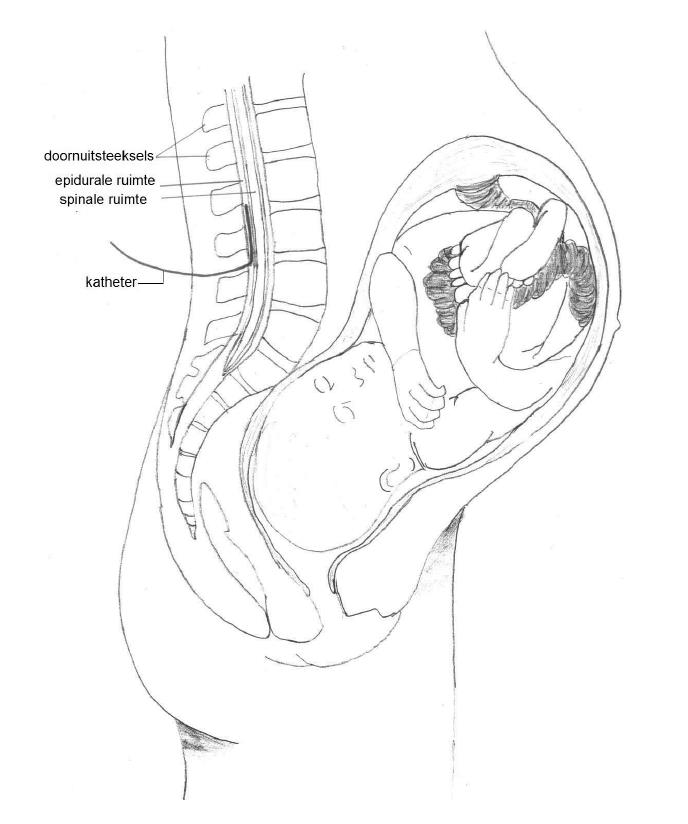With epidural analgesia, the anesthesiologist places a thin tube (catheter) in the epidural space between two vertebrae. Through this tube anesthetic fluid goes around the nerve bundles in the back. The tube remains in the back to be able to administer anesthesia continuously during the dilatation and sometimes during the pushing phase.
 | The anaesthesiologist will apply the epidural. You must sit on the edge of the bed and bend forward. First you will receive a local anesthetic.
During the puncture of the epidural catheter it is important to sit still. If you have a contraction you must report this to the anaesthesiologist. He/she will apply the epidural catheter in between contractions. |
Benefits
- Good pain relief, in 95% of the cases the desired effect.
- Long-term pain relief.
- If you experience pressure well, the epidural can stay on during the pushing phase.
- You will be able to move your legs. Some women are able to stand and/or walk around or go to the toilet (walking epidural). This differs per patient and will be tested.
- In general, the anesthetic has no direct influence on the baby, the anesthetic does not enter the bloodstream.
Disadvantages
- Possible drop of blood pressure: extra fluid is added to the infusion in advance.
- Possible fever: you can get paracetamol, but if it is not clear whether there might be an infection, antibiotics may be necessary.
- Itching as a side effect of the anesthetic fluid. This will pass automatically.
- It is important that the bladder is emptied with a catheter on a regular basis.
Spontaneous urination can be difficult and the feeling of having a full bladder can be disturbed because of the epidural anesthetic.
- If the pain relief does not work sufficiently, a new placement of the epidural might be necessary.
- Depending on the power/feeling in the legs, you are more or less mobile.
- Sometimes augmentation of the contractions with intravenous oxytocin can be necessary.
Very rare
- Bleeding or infection in the epidural space.
- Nerve damage causing a numb spot on the leg or foot.
- Severe headache, this is due to leakage of cerebral fluid after the spinal area has been accidentally hit during the epidural puncture. This often resolves by drinking a lot, taking pain relief and rest, but sometimes a blood patch is needed to cure the headache.
Extremely rare
- Serious injury or paralysis, 1: 250,000 women.
Back problems are often the result of pregnancy and a long-term unusual strain or posture of the spine and are mostly not the result of epidural analgesia. A bruised feeling can be observed temporarily at the puncture site.



